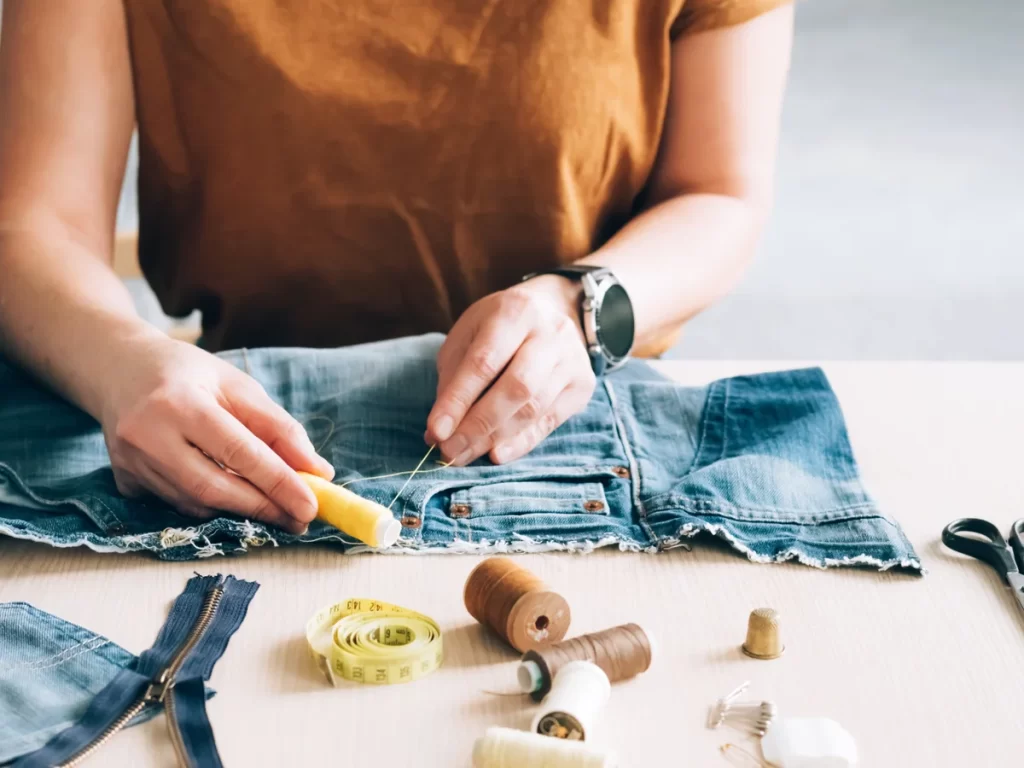Our favorite garments often become an extension of our personality. Whether it’s a cherished cashmere sweater, a tailored suit, or a family heirloom scarf, these items hold sentimental value that goes beyond their material worth. Unfortunately, moth holes, snags, and wear can take their toll on even the highest-quality fabrics. This is where a reweaving service can be your garment’s saving grace.
In this comprehensive guide, we’ll explore the art of reweaving, its techniques, benefits, and how to choose the best service to restore your wardrobe.
What is Reweaving?
Reweaving is a specialized textile repair technique used to restore damaged garments, especially those made from fine fabrics. Unlike patching or sewing, which may leave visible marks, reweaving seamlessly integrates new fibers into the existing fabric, making repairs nearly invisible.
This intricate craft requires a high level of skill, patience, and attention to detail, ensuring that even the most delicate fabrics can be restored without compromising their original beauty or structure.
Types of Reweaving Techniques
Reweaving isn’t a one-size-fits-all process. Different techniques are used depending on the type of fabric, the extent of damage, and the garment’s design. Here are the most common methods:
1. French Reweaving
Also known as invisible weaving, this technique is ideal for small holes or tears. It involves taking individual threads from a hidden part of the garment (such as a seam allowance) and carefully weaving them into the damaged area. The result is virtually undetectable, making it perfect for high-value items like suits, dresses, and cashmere sweaters.
2. In-Weaving
In-weaving is used for larger holes or areas of damage. Unlike French reweaving, which works thread by thread, in-weaving incorporates a patch of fabric that matches the original. The patch is meticulously woven into the existing material, blending seamlessly with the garment.
3. Overweaving (Surface Weaving)
Overweaving is ideal for textured fabrics or damage on less visible areas of a garment. Instead of working within the fabric, threads are woven over the damaged spot. While not as invisible as French reweaving, it’s a practical solution for restoring durability.
What Types of Garments Can Be Rewoven?
A reweaving service can breathe new life into a wide range of garments. Some of the most commonly restored items include:
- Suits and Blazers: Perfect for repairing moth holes or fabric tears in high-end suits, ensuring they maintain their polished appearance.
- Sweaters: Delicate knits like cashmere or merino wool often fall victim to snags or moth damage. Reweaving can restore their original softness and look.
- Scarves and Shawls: Heirloom items with sentimental value can be preserved and passed down through generations.
- Dresses and Skirts: Fine evening wear or designer pieces can regain their elegance with seamless repairs.
- Outerwear: Wool coats and jackets, often prone to wear and tear, can benefit from reweaving to maintain their stylish appearance.
Benefits of Reweaving Services
Reweaving offers a host of benefits, not only for your wardrobe but also for your wallet and the environment. Let’s take a closer look:
1. Cost-Effective Solution
Replacing high-quality garments can be expensive, especially if they’re designer pieces. Reweaving allows you to restore your clothing for a fraction of the cost, extending their lifespan.
2. Sustainability
In a world increasingly focused on sustainable living, reweaving is an eco-friendly choice. By repairing rather than discarding, you reduce waste and minimize the environmental impact of fashion production.
3. Preserves Sentimental Value
Some garments carry memories that make them irreplaceable. Reweaving allows you to keep these items intact, preserving the sentimental value associated with them.
4. Professional Results
Unlike DIY repairs, which can often look amateurish, reweaving by an expert ensures your garment is restored with precision and care. The repaired area blends seamlessly, making the damage nearly impossible to detect.
How to Choose the Best Reweaving Service
Not all reweaving services are created equal. To ensure your cherished garments receive the care they deserve, consider the following factors when choosing a reweaving professional:
1. Experience and Expertise
Look for a service with a proven track record in reweaving. Expertise in handling different fabrics and damage types is crucial for achieving high-quality results.
2. Portfolio of Work
Reputable reweaving services often provide before-and-after examples of their work. This can give you an idea of their skill level and attention to detail.
3. Customer Reviews
Online reviews and testimonials are valuable resources for gauging a service’s reliability and professionalism. Positive feedback from satisfied customers can help you make an informed decision.
4. Turnaround Time
If you need a repair for a specific occasion, be sure to inquire about the service’s turnaround time. High-quality reweaving is a meticulous process, so it’s essential to allow enough time for the work to be completed.
5. Cost Transparency
Ask for an estimate before committing to a service. While reweaving is generally cost-effective, prices can vary depending on the garment, fabric, and extent of damage.
Reweaving vs. Patching: What’s the Difference?
While reweaving offers a seamless repair, patching is a quicker and more affordable alternative. However, patching often leaves visible marks, making it less suitable for high-end or sentimental garments. Reweaving, on the other hand, ensures an invisible repair, maintaining the garment’s original aesthetic and value.
Caring for Rewoven Garments
After investing in a reweaving service, proper care is essential to maintain your garment’s longevity. Here are a few tips:
- Store Properly: Use breathable garment bags and avoid overcrowding your wardrobe to prevent snags and moth damage.
- Clean Regularly: Follow the care instructions for your fabric, and consider professional dry cleaning for delicate items.
- Protect Against Moths: Use cedar blocks or lavender sachets to repel moths naturally. Ensure your garments are clean before storing, as moths are attracted to stains and odors.
- Avoid Harsh Chemicals: When cleaning your garments, avoid bleach or other harsh chemicals that can weaken fibers.
Reweaving: A Timeless Craft
In an age of fast fashion and disposable clothing, reweaving stands out as a timeless craft that prioritizes quality and sustainability. By choosing a reweaving service, you’re not only preserving your wardrobe but also making a conscious choice to reduce waste and honor the craftsmanship behind every garment.
Whether you’re restoring a family heirloom or repairing a favorite suit, reweaving offers a second chance for your cherished items, ensuring they remain part of your story for years to come. Embrace the art of reweaving and give your garments the care they deserve! Stay tuned with us to read more blogs like this.




